In this Article
Children of this age are learning to express their emotions and are learning about it in many ways. Thus, below are a few activities that help in the overall development of your child.
Also Read: 4-year-old Developmental Milestones
Art and Craft Activities
Here are five arts and crafts ideas for your four years old:
1. Foam Mosaics
Teach your child some essential abstract art.
How To Do
- Get some colourful craft foam, recycled cardboard, glue, paintbrushes and scissors.
- Show your child how to cut the foam and stick them onto a piece of cardboard.
What Does It Teach?
- Motor skills
- Creativity
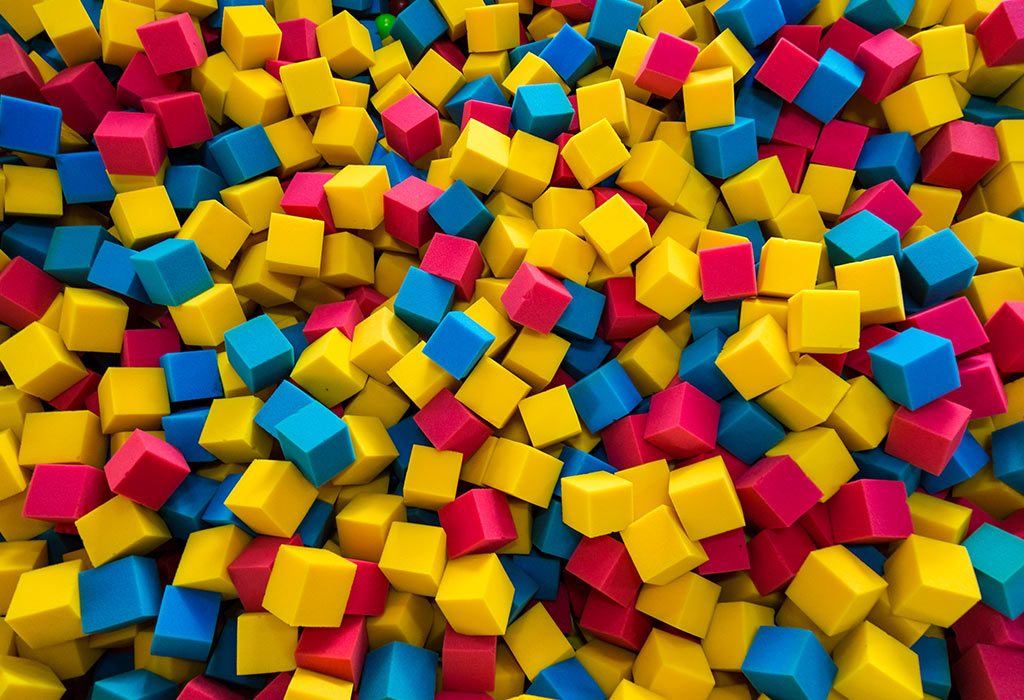
2. Printing Baskets
For this activity, all you need are some baskets, paint, a dish or a plate for holding the paint and paper.
How To Do
- Fill the paint dishes with paints of the children’s choice.
- Dip the baskets into the paint and then stamp them onto the paper.
- Your children can stamp some designs onto card paper.
What Does It Teach?
- Improves creativity
3. Paper Weaving
All you need are two papers of different colours, scissors, a pencil and a ruler to get this crafty piece of art done.
How To Do
- Take one of the sheets and draw straight lines across the page.
- For the next sheet, fold it in half and then draw straight lines from the fold, leaving at least 3 centimetres space from the edge of the paper.
- Make strips out of the first sheet of paper.
- For the second, cut along the lines but do not cut all the way through. When you open the paper, it should still be intact, but with large slits in the paper.
- Take the slits you made earlier and show your children how to weave the two papers by alternating them over and under.
What Does It Teach?
- Hand-eye coordination
- Fine motor skills of your child
- Basics of sewing and weaving techniques

4. Microwave Puffy Paint
Your kids will be entertained and will learn something new.
How To Do
- Take half a cup of flour, two teaspoons of baking powder, two teaspoons of salt and some food colouring you can make some paint by adding enough water to make a paste out of the ingredients. Add a cardboard or mat board as a base for the creations and get started.
- Mix the ingredients into separate little bowls and add the colours. Once done, use some old squeeze bottles and let the kids go to town on the mats.
- Microwave the creations for 30 – 40 seconds.
What Does It Teach?
- Innovation
- Creativity
5. Circle Painting
Make an emphasis on recycling!
How To Do
- Use some items that can be used to make the imprint of a circle, such as soda bottles, straws, jars etc.
- Take a piece of paper, and allow your children to dip the circular bits into the paint to make circular imprints on the paper.
What Does It Teach?
- Curiosity
- Creativity

Sensory Developmental Activities
Here are some sensory developmental activities:
1. Play Dough
This is a fun way for your kids to have their sensory skills improved.
How To Do
- Your kids can use rolling pins, cookie cutters and play scissors to manipulate and decorate their dough.
- Encourage some descriptions to help them understand the sensory experience.
What Does It Teach?
- Improved vocabulary
- Hand-eye coordination
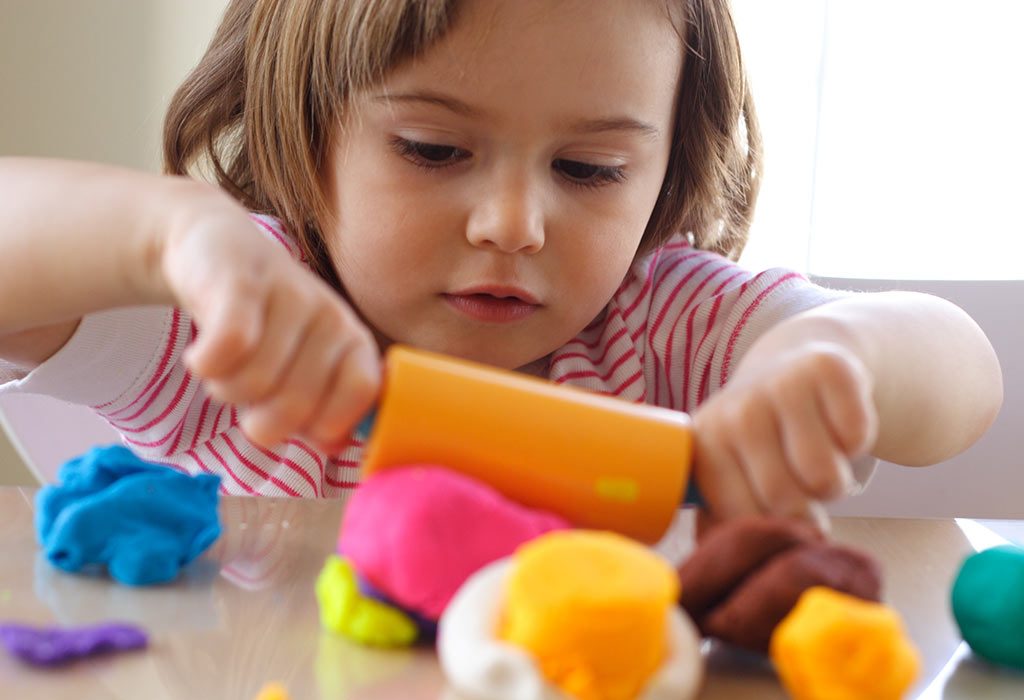
2. Snowballs and Marbles
A sorting activity to keep your children occupied.
How To Do
- Fill a bin with cotton balls and marbles
- Have your child sort them out into two separate containers using only their sense of touch.
What Does It Teach?
- Improves focus
- The sensation of touch.
3. Ice Finds
A fun game on a hot summer’s day.
How To Do
- You will need to freeze a lot of ice cubes, some with toys and some without toys.
- The aim is for your children to find the toys inside by getting through the ice barrier.
What Does It Teach?
- The scientific approach of analysis

4. McDonald’s Sandbox Farm
If your kids love Old McDonald, then they are going to love this activity!
How To Do
- Hide some plastic animals in a tub of sand and have your child find them as you sing the rhyme.
- For example “And on his farm, he had some cows”, and ask your child to find the cow.
What Does It Teach?
- Sense of touch
- Word association
5. Shaving Cream Trey
This is messy play at its best.
How To Do
- Fill three trays with shaving cream with a pot of paint near each.
- Let your kids take turns experimenting with the paint and the cream.
- The mix of the paint colours as they dip their hands from one tray to the next is what amazes children the most with this.
What Does It Teach?
- Curiosity

Educational And Learning Activities
Here are some educational activities to consider:
1. Weather Clothing Tags
Kids who like dressing themselves will like this.
How To Do
- Cut some poster boards into circles of three colours, and write “hot” “cool” and “wet” on them.
- Make a hole through them and slide the twist tie through.
- Attach them to the hanger, and make sure to explain to your child why certain clothes are needed during certain types of weather.
What Does It Teach?
- Vocabulary.
- Self-care.
2. Alphabet Tree
Learning alphabets the fun way!
How To Do
- Using a brown sheet, guide your children into cutting out the tree trunk and branches of a tree.
- Then cut out 26 green leaves and write down an alphabet on each of them.
- Then get your child to stick them all together, reading out the name of the letter as they stick them onto the tree.
What Does It Teach?
- Motor skills
- Reading skills
- Letter recognition skills.
3. A Story Game
This is one of the more fun reading activities for 4-year-olds.
How To Do
- Ask your child to describe an event, like a trip to the park, in three sentences.
- Write one sentence on each card and then place them randomly in front of your child.
- Help them read the cards, and then ask them to put the cards in the correct sequence.
What Does It Teach?
- Improved vocabulary
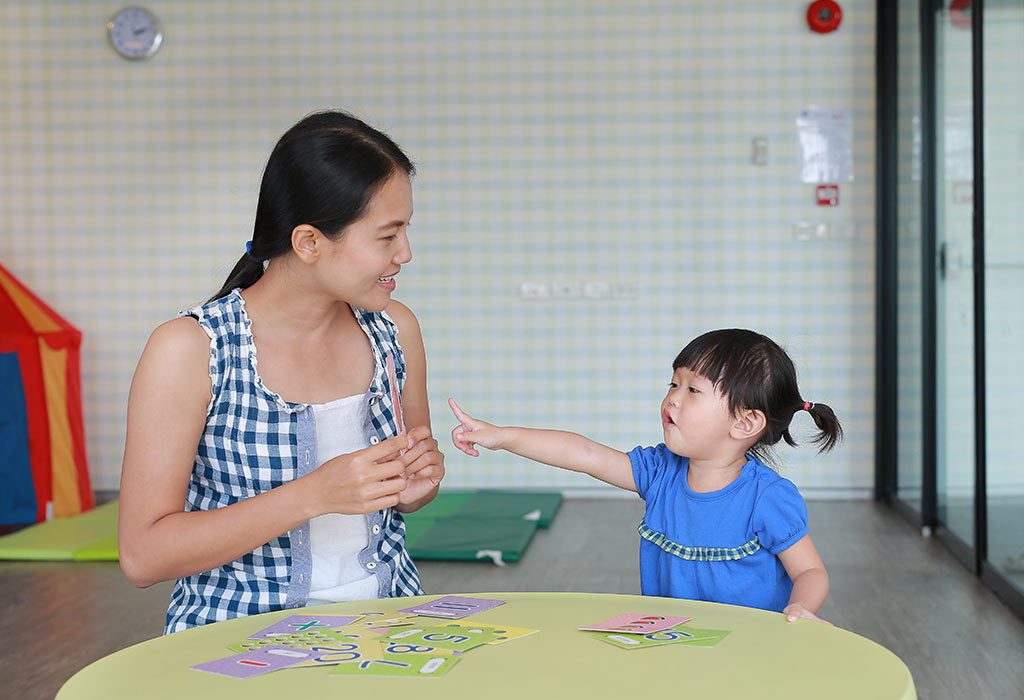
4. Scavenger Hunt
A fun activity that will keep them occupied for hours.
How To Do
- Get your child a new puzzle and hide the pieces around the house. On some sticky notes, write down instructions such as “take three steps to the right, one back and turn around. Look under the table.”
- Give them a little bag to collect the pieces in and then you can all solve the puzzle together once all the pieces are found.
What Does It Teach?
- Problem-solving
5. Number Dosas
This one encourages your child to learn numbers as well as pleases the tummy.
How To Do
- When making dosas, put some of the batters into a squeeze bottle and then ask your child to write down a number for you on a piece of paper.
- He should show it to you and read it aloud.
- Go ahead and squeeze the batter onto the pan in the shape of that number.
What Does It Teach?
- Number recognition
Montessori Activities
Try some daily life activities that will help your child improve their concentration.
1. Pet Care
A good activity for kids who love animals.
How To Do
- Get your child to help you serve your pet and feed them using the correct materials, amount and at the same time each day.
- Your children can also help in bathing your pet if your pet is the type to remain calm during a bath.
- Brushing down fur is another great activity your child can do.
What Does It Teach?
- Empathy
- Responsibility
- Concentration and good memory

2. Dishwashing
If your child likes to play in the water, then she will love this one.
How To Do
- Allow your child to try washing a few plastic cups and plates so that they can learn how it’s done.
- Make sure that there aren’t any knives or anything you do not feel comfortable with them handling just yet.
What Does It Teach?
- Hygiene
- Concentration skills
3. Sous Chef
Kids who take pleasure in their meals are bound to take more in its preparation.
How To Do
- Ask your child to assist you in the kitchen with the cooking by doing simple things.
- Start with such as helping you measure ingredients, rolling out chapattis, and passing you some of the other things you may need. You can also help them work on their reading skills by reading out the steps in a recipe.
What Does It Teach
- Ability to follow instructions
- Reading skills

4. Folding Laundry
It may sound tedious, but folding laundry can teach a child a lot.
How To Do
- Show your child how to fold a few simple things, and you can also teach them about different kinds of clothes and what they are used for.
What Does It Teach
- Problem-solving skills
- Motor skills
5. Kids and Cutlery
Help kids to learn this skill at an early age.
How To Do
- Get your little one to help you to organise the cutlery drawer by organising the spoons, forks and other cutlery into their correct places.
What Does It Teach
- Organisational skills

Indoor Activities
Here are some indoor activities for 4-year-olds at home:
1. Board Games
An interactive experience for the whole family.
How To Do
- Get some board games for your children such as Snakes and Ladders, Cluedo or Pictionary. Pick one and go through the rules together and then start playing.
What Does It Teach?
- Problem-solving
- Artistic skills
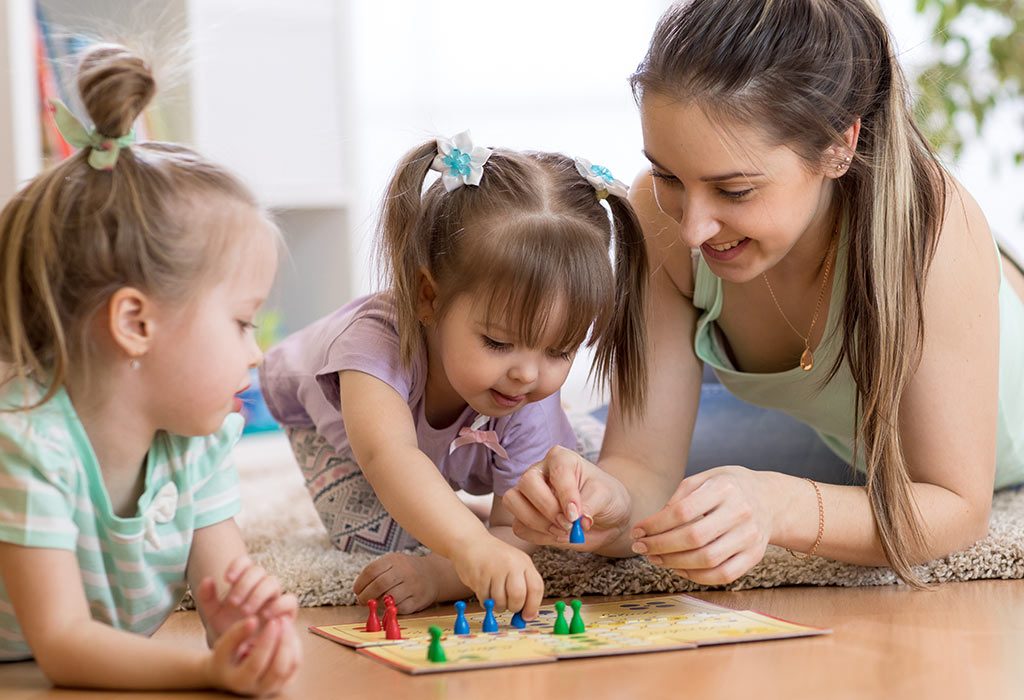
2. Do Some Baking
Baking is a fun activity that ends in delicious treats for the family.
How To Do
- Pick your children’s favourite recipe and get them to help out with the measuring, reading the recipe and anything else that is required. Decorating muffins can be a very fun project.
What Does It Teach?
- Ability to listen to instructions
3. Play Card
This is a good activity to do while travelling.
How To Do
- Teach your kids your favourite card game, perhaps a simple one such as donkey, where everyone each gets a card and must follow the pattern on the card left open in the deck.
- If it is a 3 of hearts, everyone will need to play hearts and whoever plays the highest number wins the hand.
- Uno is another fun game where your children follow colours or numbers.
What Does It Teach
- Play by the rules
- Math skills
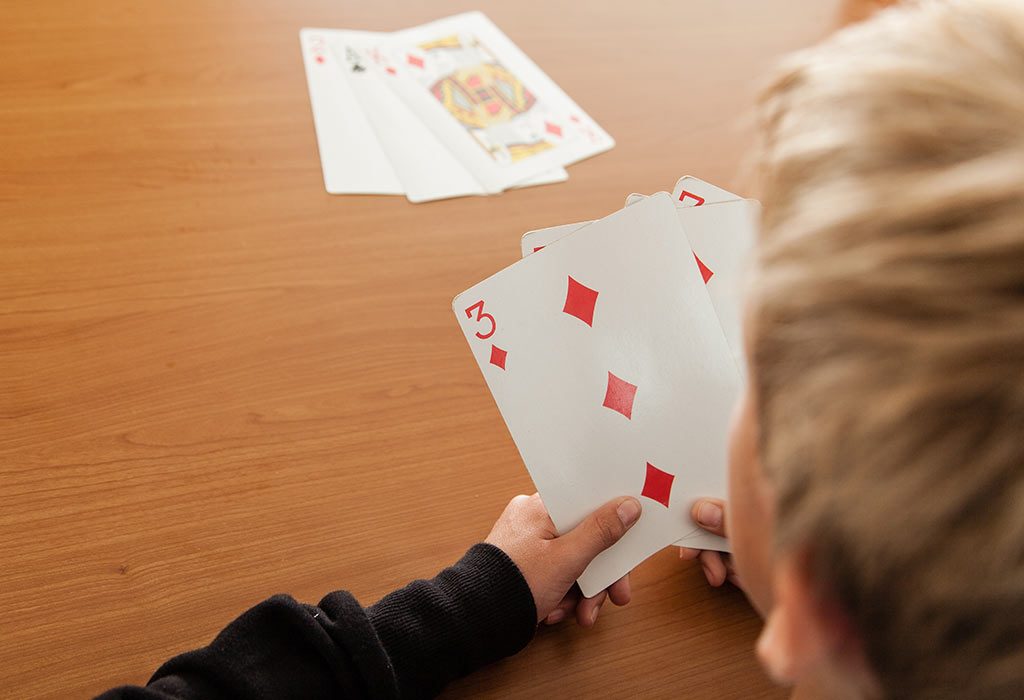
4. Story Time
- Gather together and do some fun reading with your children.
How To Do
- Grab some pillows, blankets, hot chocolate and your child’s favourite storybook and read together.
What Does It Teach?
- Vocabulary
- Analytical skills
5. Dance
- Get ready to bogey with this activity!
How To Do
- Play some music and dance.
- You can either do spontaneous dance moves; or you can teach your child a dance that you may have learned, such as the jive.
- You can also make up steps together to their favourite song.
What Does It Teach?
- Improves memory
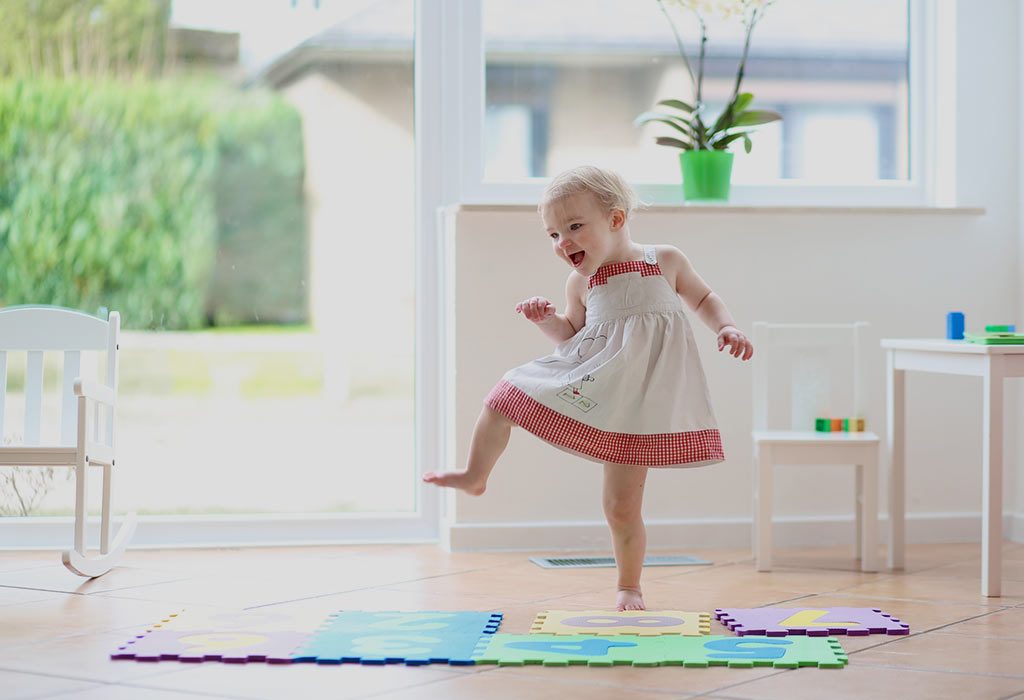
Outdoor Activities
Some outdoor activities that your children will love are:
1. Go For A Walk
- Here is how you can help your child learn while out on a walk.
How To Do
- When you go out for a stroll, you can point things out to your child and teach them the names of different things.
- Walking in nature is especially rewarding, but even a simple walk down the street can be very exciting for your pre-schooler.
What Does It Teach?
- Creativity
- Observational powers
2. Create An Obstacle Course
Creative and exciting; your children will get a kick out of this one.
How To Do
- Gather some hula hoops and place them on the ground and have a tennis ball and a bucket at the end.
- Get your little one to hope through the hoops and then throw the ball into the bucket.
- Keep changing up the position of the hoops.
What Does It Teach?
- Motor skills
- Concentration
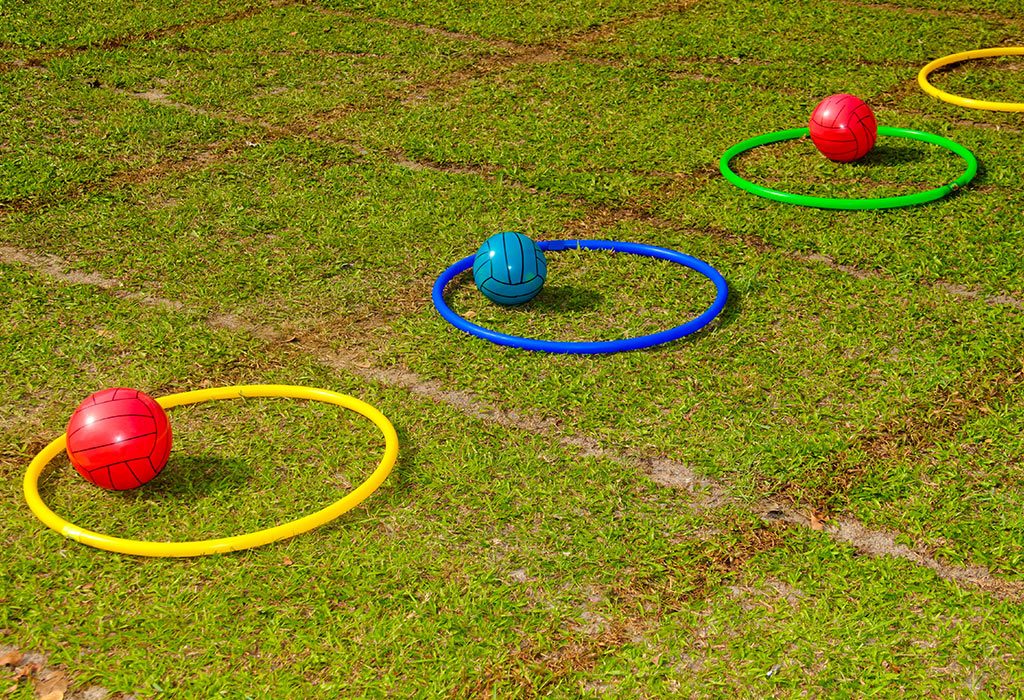
3. Gardening
- This is something that can be quite enjoyable for children of this age.
How To Do
- Whether it is gardening in pots or the earth, gardening gives your child a reason to explore the ground.
- Teach your child how to plant seeds and re-pot plants.
- Give them the responsibility of watering them each day.
What Does It Teach?
- Responsibility
4. Ride A Bike
When mastered, it can be a very simple task.
How To Do It
- Removing the training wheels to help them learn how to balance without it.
- Stay with your child and do not just leave her alone.
What Does It Teach?
- Motor skills

5. Play Catch
A fun game loved by many.
How To Do
- Take a ball or a beanie and keep throwing it for your kids to catch until they get the hang of it.
What Does It Teach?
- Hand-eye coordination
- Motor skills.
Cognitive Activities
A child’s thinking and reasoning skills get a good workout with these simple activities:
1. I Spy
- This one is a good one for when you need to wait somewhere.
How To Do
- The game goes like this, you say “I spy with my little eye, something in colour blue” and your child will need to guess which blue object you spy.
What Does It Teach?
- Reasoning ability
2. Numbers
Teach your child to keep track of numbers with this activity.
How To Do
- If you look around the house, you will find that you have a lot of things to practice counting and words with.
- For example, have your child count the candlesticks, the lamps or even the number of buttons on the remote. You can even line up their toys and teach them to add and subtract.
What Does It Teach?
- Math Skills

3. Matching
A fun way of teaching your children that some things come in pairs.
How To Do
- Take one item from something that is a pair, such as a shoe, a sock etc.
- Ask your child to bring you the other one.
- If you choose something like a pen or a pencil, make sure that your child knows where to find another one.
What Does It Teach?
- Object Association
4. Jigsaw Puzzles
A fun activity to keep your child occupied for a while.
How To Do
- Get a new puzzle that your child has not solved before and get cracking together.
What Does It Teach?
- Problem-solving
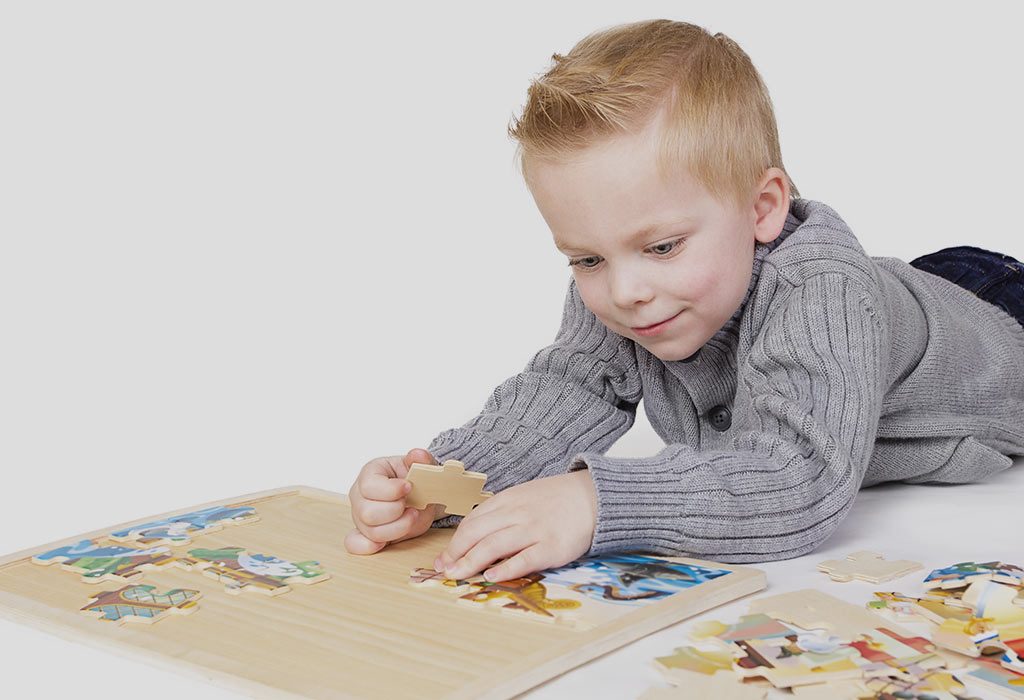
5. Building Blocks
Games that involve building puts your child’s mind to great use.
How To Do
- Building blocks or Jenga are two fun games that can require your child to figure out how to keep something stable and not let it topple over.
What Does It Teach?
- Problem-solving skills
Put your child’s natural want for learning and experimentation to use with some good activities that not only keep her busy but also keep you happy knowing that your child is now involved in things that are more productive. Every child has 8 different types of smarts, with each one focusing on different aspects of their development. To raise a smart, well-rounded child, nurture each of those smarts by learning through play! FirstCry Intellikit is an activity box for kids that emphasises that children play and learn by way of fun and interesting activities that help boost their brain development. To get your hands on the latest Intellikit subscription box, click here.









